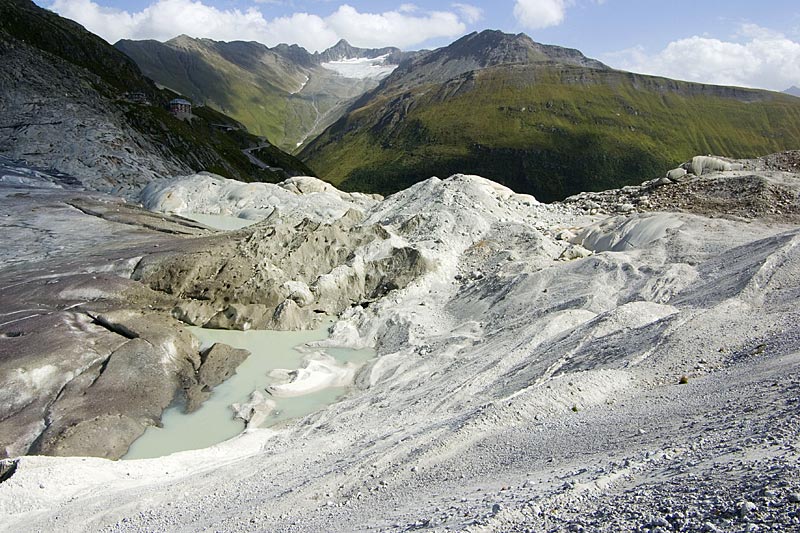 Overview of the ice-marginal sediments and landforms. The form of the mounds reflects entrainment of sediment at the glacier bed, deformation within the ice, and release at the surface by uneven ablation. | 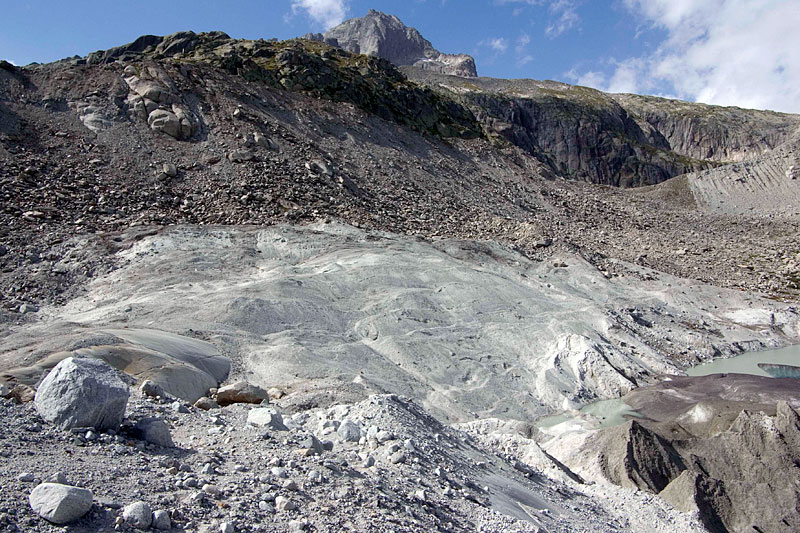 White sand and gravel deposited in a glacial lake. View towards the north; the glacier is on the right, beyond the image. | 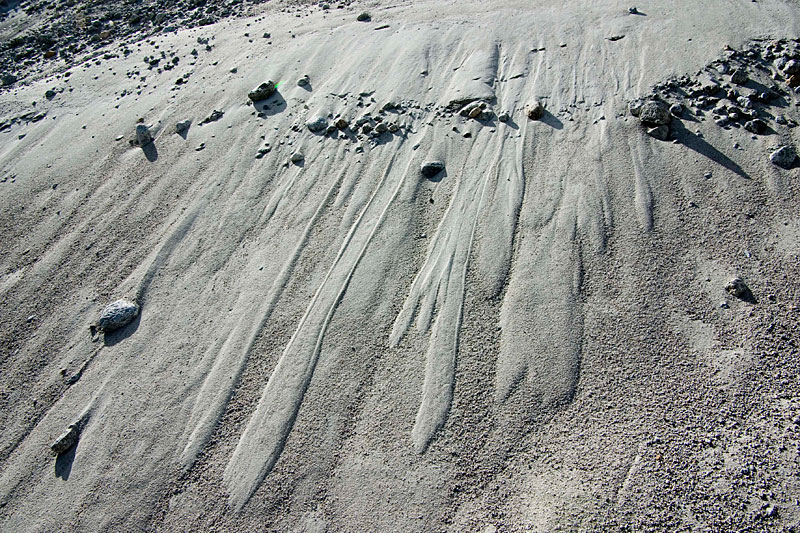 Sliding sand reminiscent of processes on the downwind side of sand dunes. | 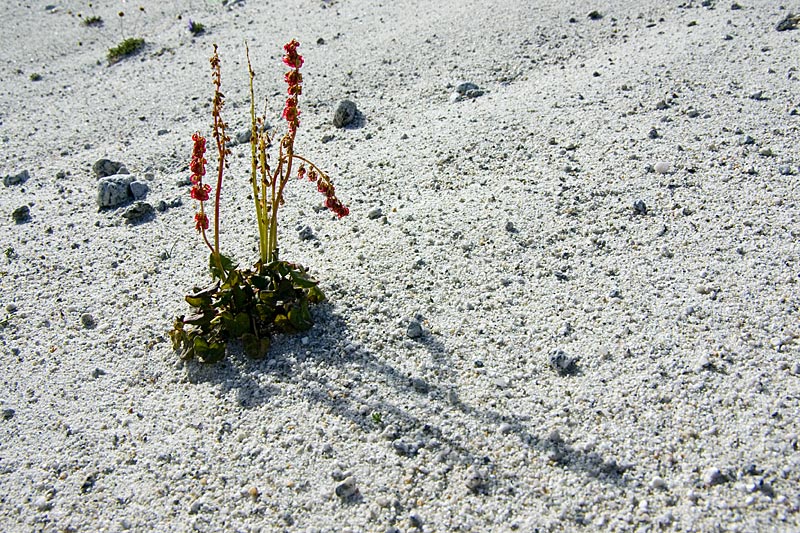 Oxyria digyna, a pioneer plant on fine-grained sediment. The sand is mostly composed of quartz and feldspar grains, derived from the granite bedrock. |
 Linaria alpina, another plant colonising the new terrain. | 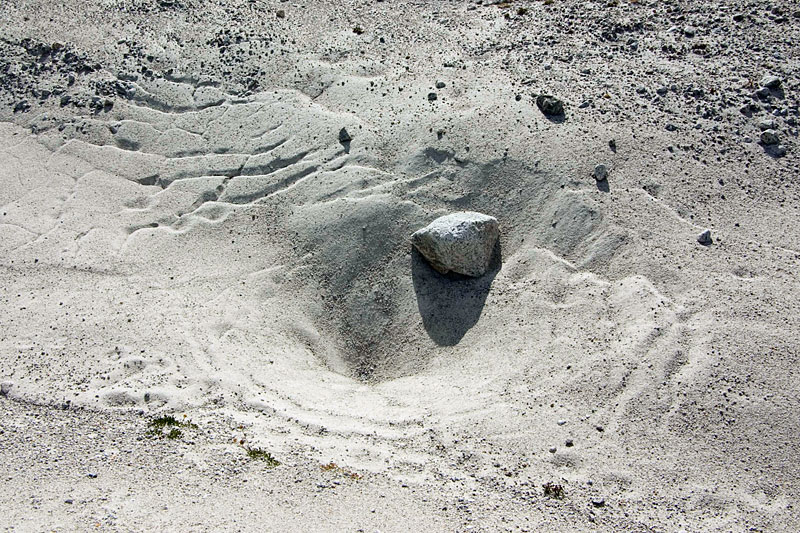 A crater-like depression, formed as a result of the melting of buried stagnant ice. | 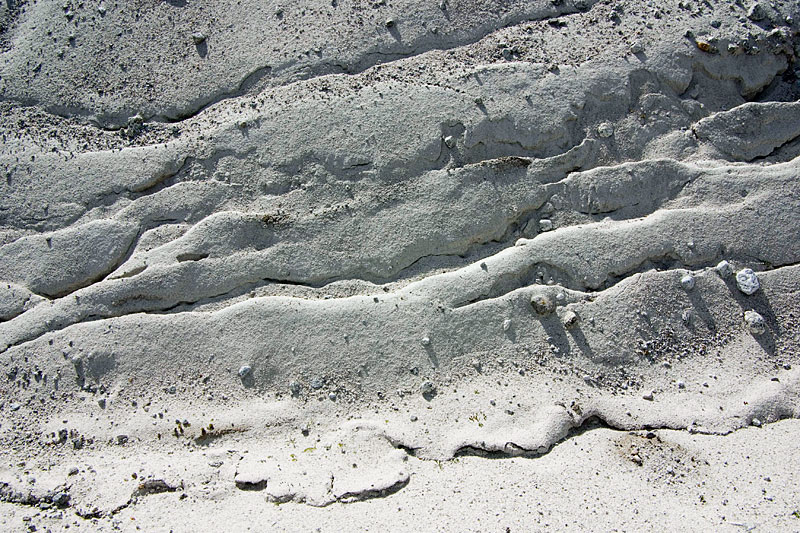 Downhill creep of sediments has led to the formation of crevasse-like structures (top) and small overthrusts (bottom). | 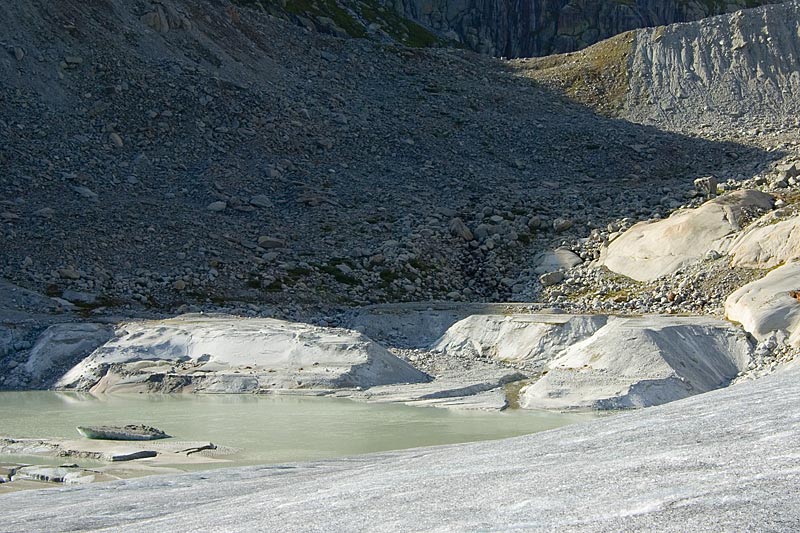 Recent sedimentary terraces at the margin of th older lake showing previously higher lake levels. |
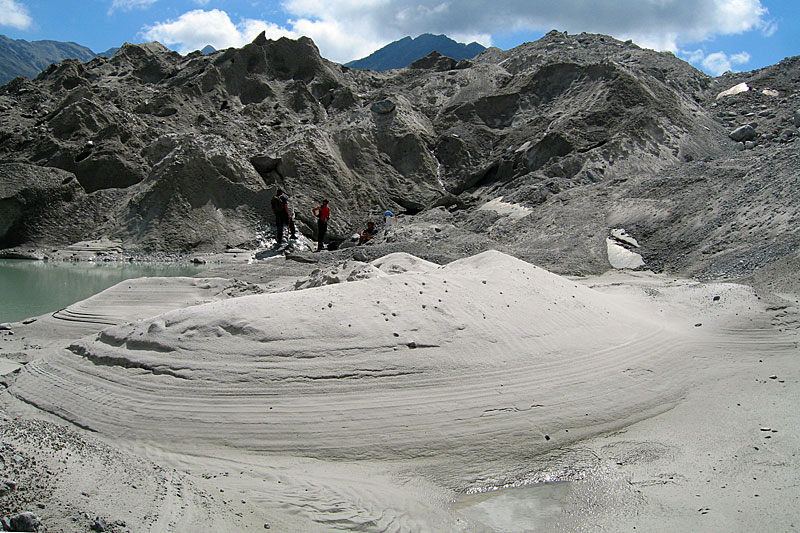 In the fine-grained lake sediments, changing lake levels have resulted in strandlines. Deformed, and mostly stagnant ice is visible in the background (photo M. Hambrey, 3.9.2007). | 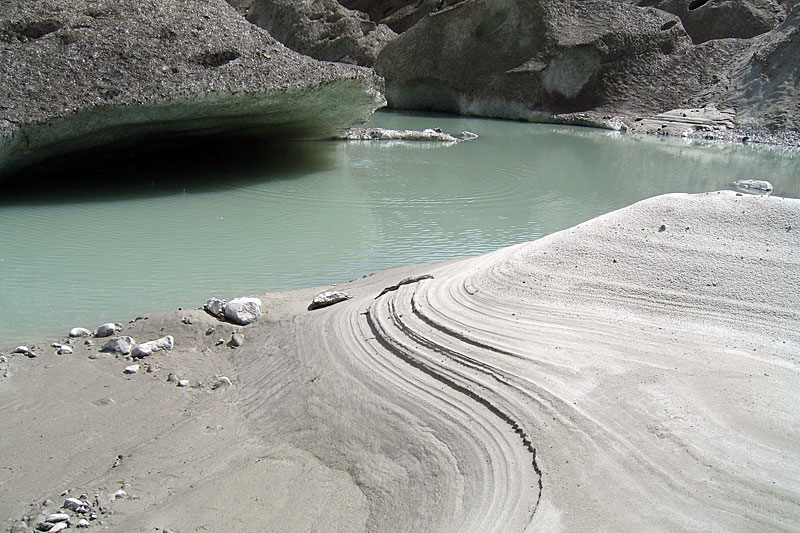 Detail of the strandlines, with pond containing suspended sediment and glacier margin in the background. Variations of the lake level are the result of changing subglacial or englacial runoff from the lake (photo M. Hambrey, 3.9.2007). | 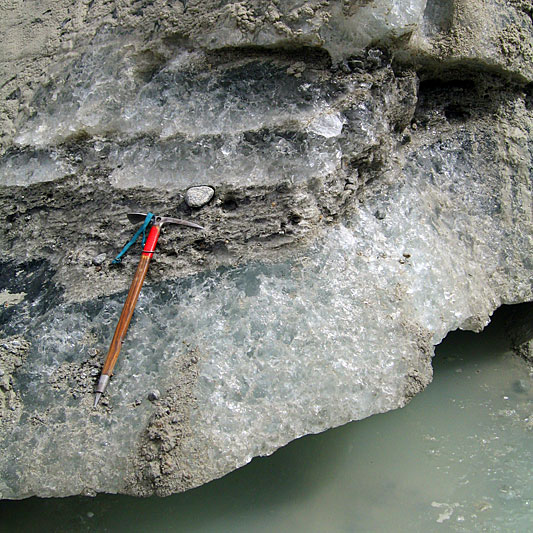 Detail of glacier margin: The coarse-grained bluish glacier ice is dissected by a shear zone that has uplifted debris-rich basal ice from the bed. This basal ice contains reworked lake sediments. (photo M. Hambrey, 3.9.2007). |  A cross-section through fine-grained lake sediments which have been raised well above lake-level on the true right margin of the glacier. The image shows folding, resulting from compression by marginal ice as it impinged against a reverse bedrock slope (image contrast enhanced, photo M. Hambrey, 3.9.2007). |